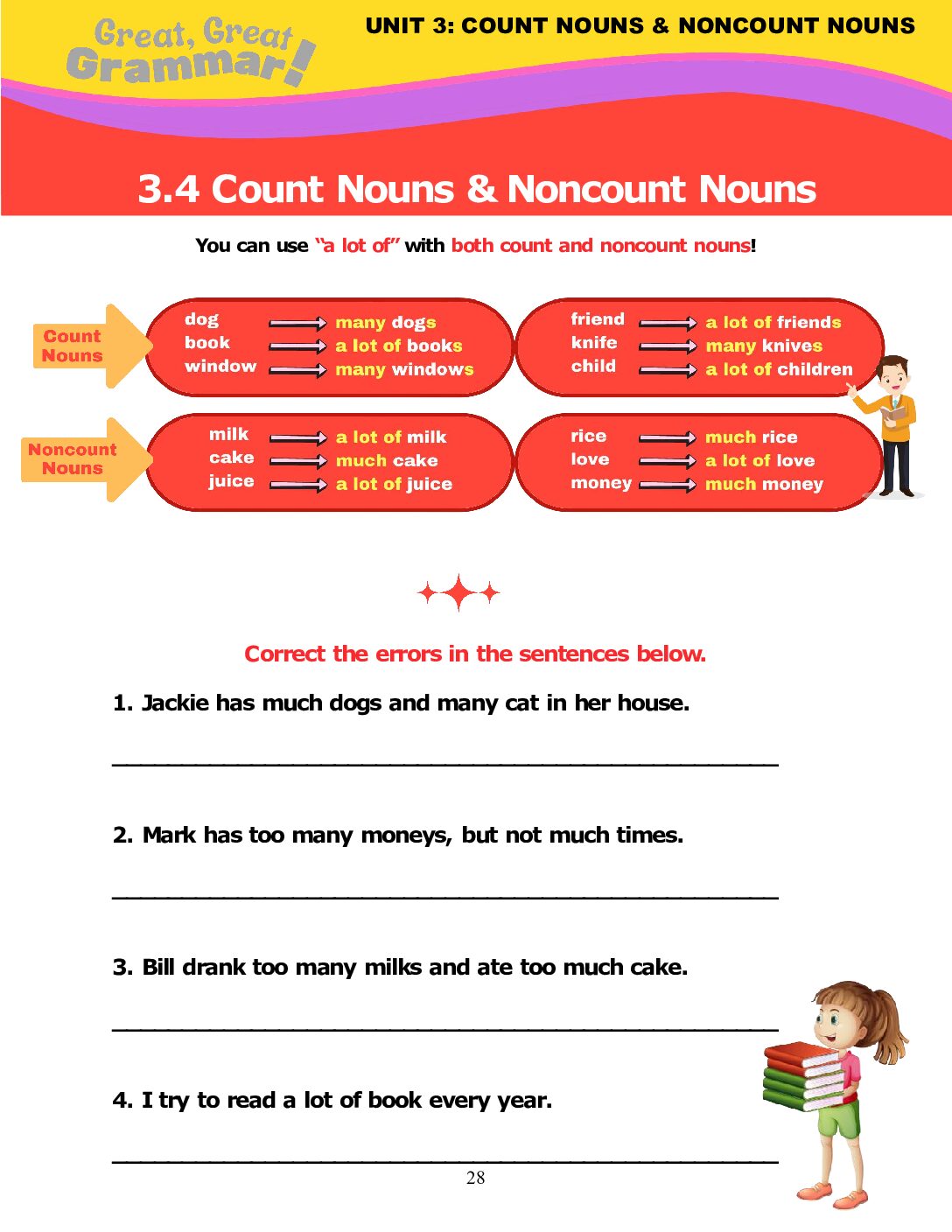This ESL grammar lesson reviews the use of “many/much/a lot of” with count and noncount nouns, followed by a short error-correction worksheet.
Learning how to express quantity is a crucial part of mastering English grammar. “Many,” “much,” and “a lot of” are quantifiers that help you describe the amount of countable and uncountable nouns. This beginner’s guide will explain how to use these quantifiers correctly, with clear examples and practice exercises to enhance your understanding.
ESL Grammar: Using “Many” with Count Nouns
Count nouns refer to items that can be counted individually, such as “apples,” “books,” and “cars.” “Many” is used with plural count nouns to indicate a large quantity.
ESL Grammar: Using “Much” with Noncount Nouns
Noncount nouns refer to substances or concepts that cannot be counted individually, such as “water,” “money,” and “information.” “Much” is used with noncount nouns to indicate a large quantity, especially in negative sentences and questions.
ESL Grammar: Using “A Lot of” with Both Count and Noncount Nouns
“A lot of” is versatile and can be used with both count and noncount nouns to indicate a large quantity. This makes it a useful phrase for beginners to learn.
This beginner-level English grammar lesson on count/noncount nouns is perfect for both online and in-person classes, offering diverse content to suit any learning environment. Explore this and many similar grammar lessons for all levels on our page of ESL grammar lessons.
This lesson is available for free download, and you can download many more English grammar lessons focusing on all different parts of speech (nouns, verbs, adjectives, adverbs and lots more!) in our comprehensive, beginner-level ESL grammar textbook Great, Great Grammar! (Book 1: Parts of Speech).

